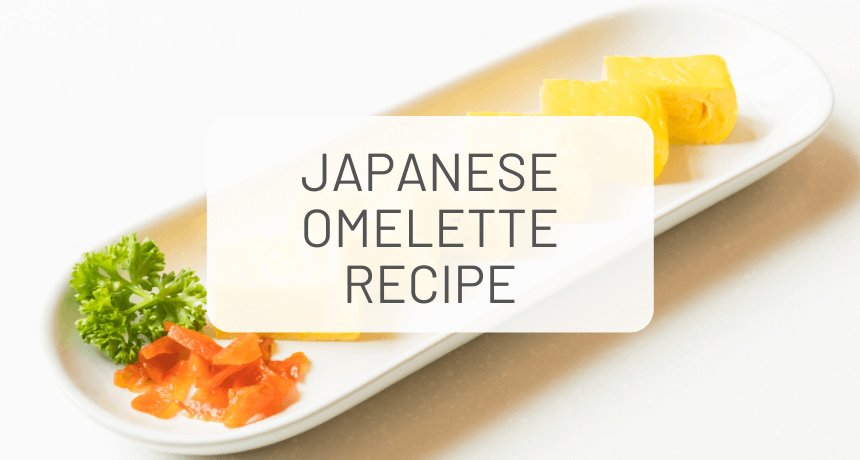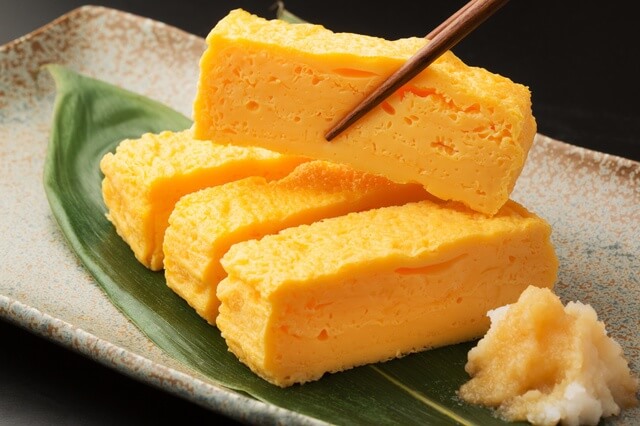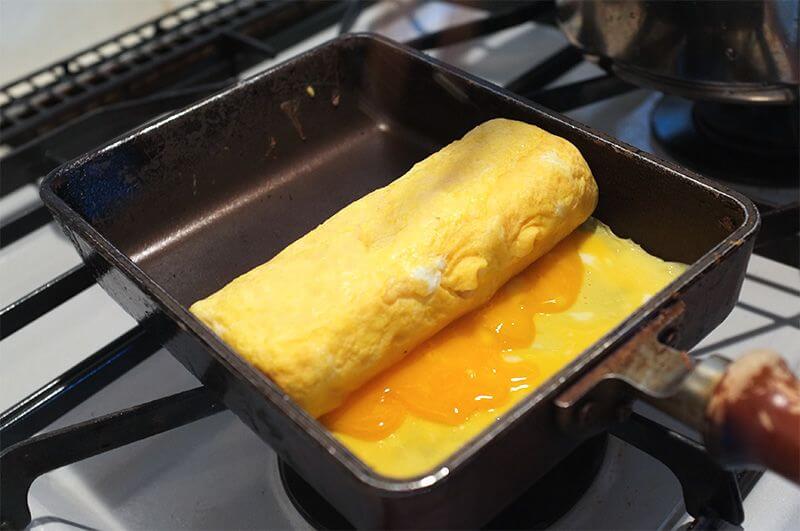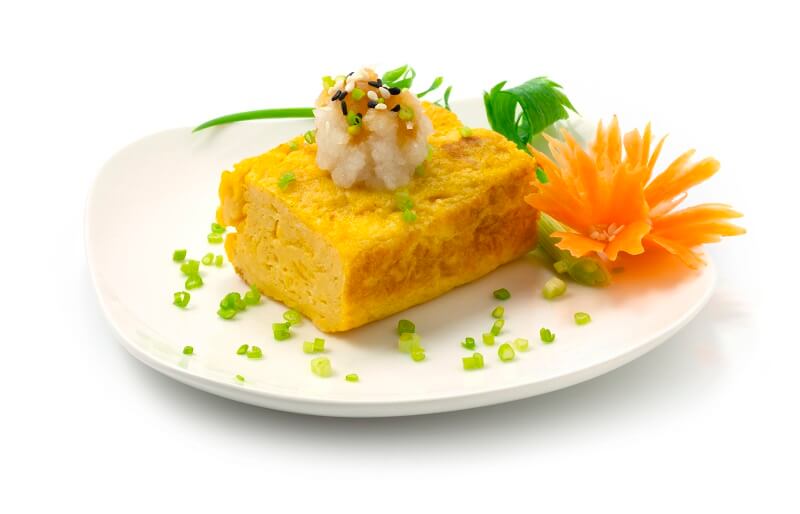
</title><meta name="robots" content="noindex">Easy Japanese Omelette Recipe (Tamagoyaki, 玉子焼き)
This is a classic. You know french omelettes, or maybe just your quick homemade family omelette recipe. Well, Japan’s got one too, a sweet & savory one. Tamagoyaki, where tamago (卵) stands for egg, and yaki (焼き), for grilling or frying, is the Japanese rolled omelette. It’s a lovely breakfast or perfect addition to your lunch bento !
Tamagoyaki (卵焼き or 玉子焼き) is a slightly sweet rolled omellete that looks very soft and fluffy. It’s got a texture that reminds a little of custard and everyone, from the youngest kids to the grandparents of each family, loves it. You may also even find the rolled omelette on top of a sushi (and it is delicious)!
They may look difficult to make, but there are different ways to prepare them. The trick is in the rolling of the thin omelettes to fold it into a log shape. In Japan they have developed a special pan solely for the purpose of making tamagoyaki, but you don’t necessarily need it abd a regular pan will do the trick too!
What is Tamagoyaki?

Source: favy inbound
As I mentioned above, in Japanese, tamago means eggs and yaki means grill. However, tamagoyaki actually has a couple of different versions.
The other two most popular variations are Atsuyaki Tamago (厚焼き玉子) and Dashimaki Tamago (だし巻き卵). They use different ingredients and seasonings, as well as small variations in the cooking methods. But to be honest, it’s sometimes not so clear which is which!
And so, to keep it simple, when Japanese people refer to Tamagoyaki, they are most likely talking about the classic rolled omelette. Atsuyaki Tamago (厚焼き玉子) uses a more thickly grilled egg, but is also called tamagoyaki. Basically, astuyaki tamago is an easier version that is denser.
The other one, Dashimaki Tamago (出し巻き卵) refers to rolled egg which includes dashi (Japanese soup stock) the name dashimaki, means wrapped dashi. Depending on where you are in Japan, people might refer to it differently. In the Tokyo area they will also call it tamagoyaki, whereas here in Kansai, the locals see it as a completely different dish. The dashi makes it more juicy and full of flavors.
So now, on to the recipe!
How to Make Tamagoyaki?

Source: nippon.com
There aren’t too many steps to this, and you’ll quickly figure it out! First, you need to beat the eggs just like for a regular omelette. Season the eggs with a sprinkle of sugar, some mirin, soy sauce and a tiny bit of salt.
Heat the pan with a little oil, and then pour in your beaten eggs. Wait for the bottom of the mixture to set and start rolling! Go at it gently, wrap it like a crêpe, tight and firm, layer after layer. Try to make it look like a log in the end, so you need to go at it slowly to nicely roll it. And you’re done! Take out your log, shape it a little, and slice it into thick chunks for serving.
Actually, the best part is, you can shape it however you like. Of course, you’ve seen the perfect rolled omelettes in the photos, but nothing is preventing you from trying out new things. Also, have you thought about adding some onions, bits of tomatoes, ham or other ingredients? Cheese is my favorite!
Ingredients
- 3 large eggs (50 g each w/o shell)
- 2 Tbsp neutral-flavored oil (vegetable, rice bran, canola, etc)
- 1 ½ sheet nori (seaweed) (optional; for omelette with nori in it)
Seasonings
- 3 Tbsp dashi (Japanese soup stock; click to learn more) (use Kombu Dashi for vegetarian)
- 2 tsp sugar
- 1 tsp soy sauce (use GF soy sauce for gluten-free)
- 1 tsp mirin
- 2 pinch kosher/sea salt (I use Diamond Crystal; use half for table salt)
Garnish
- 3 oz daikon radish (1", 2.5 cm; choose green top part as it is sweeter than white part)
- soy sauce (use GF soy sauce for gluten-free)
Helpful Tips on Making the Best Tamagoyaki at Home

Source: Freepik
The more you make it, the better you’ll get! So here are a couple of tips taken from the best chefs around for you to perfect your tamagoyaki
- For dashimaki tamagoyaki, watch the ratio of dashi to eggs – Dashi enfances the falvor, and it’s very strong, so you don’t want to use too much of it. The liquid also makes the cooking more difficult, so try to keep it as one tablespoon of dashi per egg you use!
- Don’t overthink it. Just roll and roll and roll; it doesn’t have to be perfect. Every extra outer layer will make it look better, so don’t worry about the center.
- Don’t forget to oil your pan. You want to keep your omelette light, and not to oily. But you still need to gently coat the pan because you don’t want your eggs to stick, that would make it impossible to roll, and quite frankly, defeat the purpose of rolled omelette.
- Don’t rush it. Wait for the pan to be at the right heat. The eggs need to sizzle when being poured in.
- To keep the cooking going, don’t turn off your pan, or gas. Should it get to hot, remove the pan for a few seconds, and then put it back on. Eggs cook quickly, so keep it on medium heat.
There you go, now you can impress your family and friends with your new Japanese cooking skills! Add some spices to make it more interesting: shichimi, yuzu kosho and many more work great with eggs!


